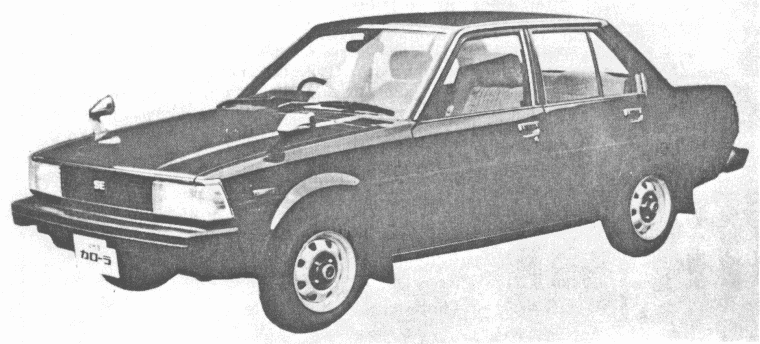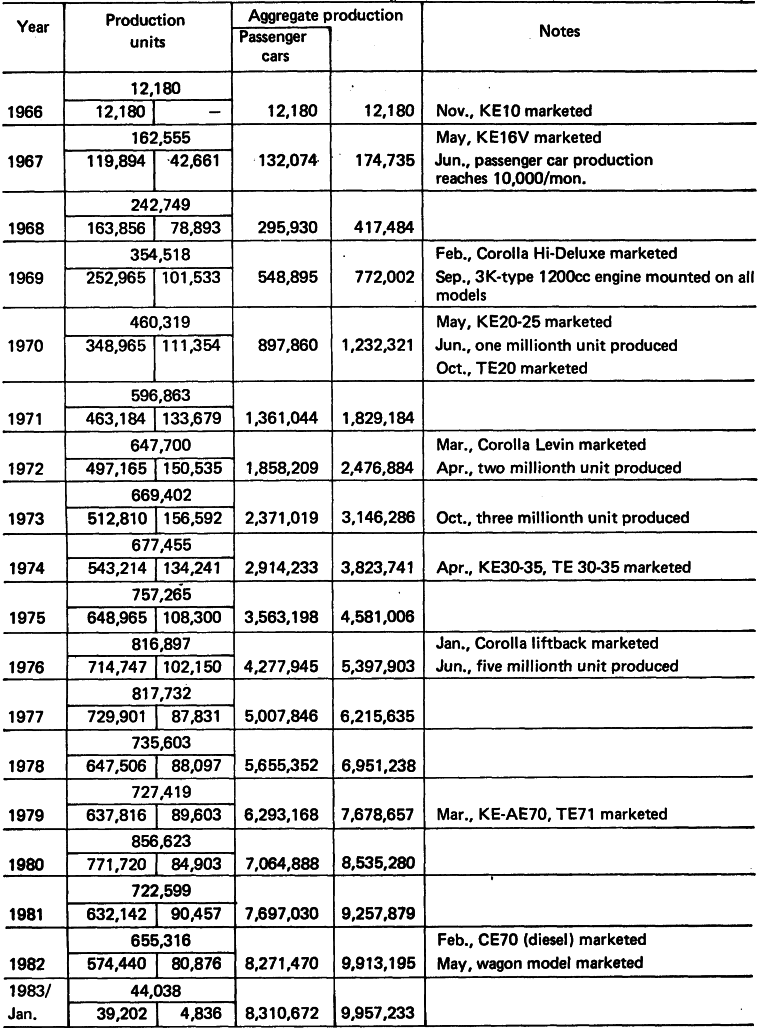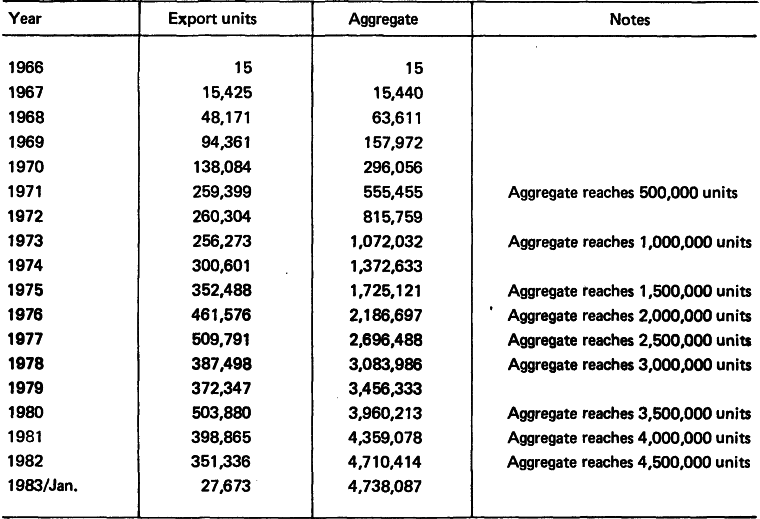Mar. 01, 1983
TOYOTA COROLLA SERIES TOPS 10 MILLION
CUMULATIVE PRODUCTION MARK
TOYOTA MOTOR CORPORATION announced that cumulative production of the Toyota Corolla (passenger cars and commercial vehicles) topped the 10 million mark on March 1, 1983.
This is the first Japanese automobile series that has ever reached cumulative production of 10 million units, and it ranks fourth in the world after only the Model-T Ford, Chevrolet and Volkswagen (Beetle). It took only 16 years and 4 months to reach the 10 million mark since the series was first marketed in November, 1966, the shortest time span for any series introduced after the Second World War.

- FIRST-GENERATION MODEL
- 2D SEDAN 1100 DELUXE (KE10-D) NOV. '66

- CURRENT, FOURTH-GENERATION, MODEL
- 4D SEDAN 1500 SE (E-AE70-EEHES) FEB. '83
Of the 10 million Toyota Corolla units produced, approximately 83% were passenger cars and about 17% were vans. Approximately 52% of the total Corolla units were for the domestic market, and the remaining 48% for export.
Toyota Corolla was introduced as Japan's first 2-door sedan in 1966, which later became known as the year that triggered the "My Car" period in Japan. The series has undergone three full model changes since then and has played a leading role in creating a popular car market in Japan.
During these years, the Toyota Corolla set a number of records in the home market. It was the bestselling car for 14 straight years (1969-1982), and was also bestselling popular-size car of the month for 69 consecutive months (February 1976-October 1981). Furthermore, on the export scene, approximately 4.7 million (at end 1982) units of the Toyota Corolla have been exported to 116 countries since 1966 to earn the well-deserved title "Worldwide Corolla."
Outline of the original and new Corolla models
- The first generation (1966-1970) Corolla made its debut as an epoch-making "High Compact Car" developed to meet the highest performance levels at the time, equipped with the newly-developed 1,100cc K-type engine, original strut-type suspension system and floor-shift type 4-speed transmission. These technological innovations resulted from the development of a car closely tailored to the driving demands and preferences of the general user. Toyota's Takaoka plant was built in December 1966, solely for the purpose of Toyota Corolla production.
- The second-generation (1970-1974) Corolla incorporated a new design: a long nose and a short deck. The sensational design improved performance and met the diversifying needs of customers, as well as enabling continuous, high-speed driving necessitated by construction of new freeway systems in Japan, such as the Tomei Expressway completed in 1969. The Corolla Levin was introduced in March 1972, equipped with a powerful 1,600cc DOHC engine and a strong suspension system and other chassis-related components. In 1973,44 new versions were added to the series, including 1600cc models, completing a wide line variation from the economical 1200cc to the 1600cc models built with emphasis on driveability.
- The third generation (1974-1979) Corolla was developed in response to the introduction of emission control requirements in Japan. The series featured improved quality as an international model, designed with the philosophy of making an economical popular-size car with the same riding comfort and safety of higher-class cars in mind. As a result of such development prerequisites, the tread, the wheel base, the total width and the body size were designed larger than before. In January 1976, the liftback type was added, based on a completely new concept developed to meet the demands of diversifying "car life": a car as comfortable in ride comfort as a sedan but as practical in value as a wagon-type.
- The latest, fourth-generation (1979-present) Corollas were developed as the "luxury, popular-size cars to lead the 1980s." Not only has the basic performance of the car been improved, the development objectives were aimed to meet various social needs of the time―to save resources and energy, to meet the diversified users of popular-size cars, and to make the product competitive in the international market. More specifically, efforts are constantly being made to offer functions and hardware worthy of the high-grade popular-size car through Corolla's wedge-shape design for better aerodynamics, its sharp straight-lined style, the quiet and spacious riding space, and compact, lightweight engines featuring dynamic power.
- Note
- Descriptions of specific model lines and generations in this release refer to those marketed domestically in Japan.
For Reference
- Corolla Production Trends

- Note
- Lower figures are breakdown, passenger cars are left and commercial vehicles are right.
- Corolla Domestic Registration Trends

- Corolla Export Trends







